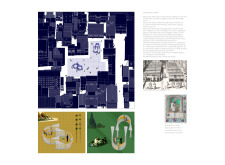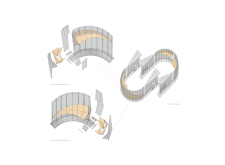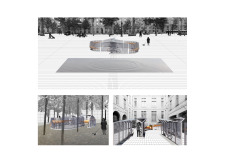5 key facts about this project
The architecture integrates various elements that enhance usability and accessibility. Open spaces seamlessly coexist with designated quiet areas, allowing users to choose how they interact with the space. The layout employs a series of curvilinear pathways that improve movement through the building, promoting an inviting atmosphere for all visitors. This spatial organization is pivotal in facilitating both individual and group activities, encouraging a shared experience.
Unique Design Approaches
One notable aspect of this architectural design is its emphasis on integrating natural light. Extensive use of glass throughout the facade facilitates transparency and visual connection with the surroundings, blurring the line between indoors and outdoors. This design choice not only enhances the aesthetic qualities of the project but also creates an environment responsive to natural lighting variations over time. The undulating roofs and walls add an organic element, allowing for a dynamic interplay of light and shadow within the space, influencing the emotional experience of visitors.
Material selection plays a vital role in the overall design. The project incorporates materials such as glass, wood, steel, and concrete, all chosen for both their functional properties and visual appeal. Each material contributes to the building's structural integrity while promoting sustainable practices. The combination of these materials also creates a warm, welcoming interior, essential for a space intended for community use.
Architectural Context and Functionality
The project aims to serve multiple functions within the community, functioning not only as a library but also as a hub for social and cultural activities. Spaces are designated for book readings, workshops, and community meetings, helping to reinforce a sense of belonging. The flexibility of the design allows it to adapt to various events, fostering ongoing community participation.
The thoughtful integration of both open and enclosed spaces caters to diverse user preferences, making it relevant for different demographics. It emphasizes the importance of social interaction within a literary context, addressing the contemporary needs of users in an increasingly digital age.
To explore further, readers are encouraged to review the architectural plans, architectural sections, and architectural designs for more detailed insights into this innovative project. Understanding the architectural ideas behind this design will provide a deeper appreciation of its functionalities and community impact.


























